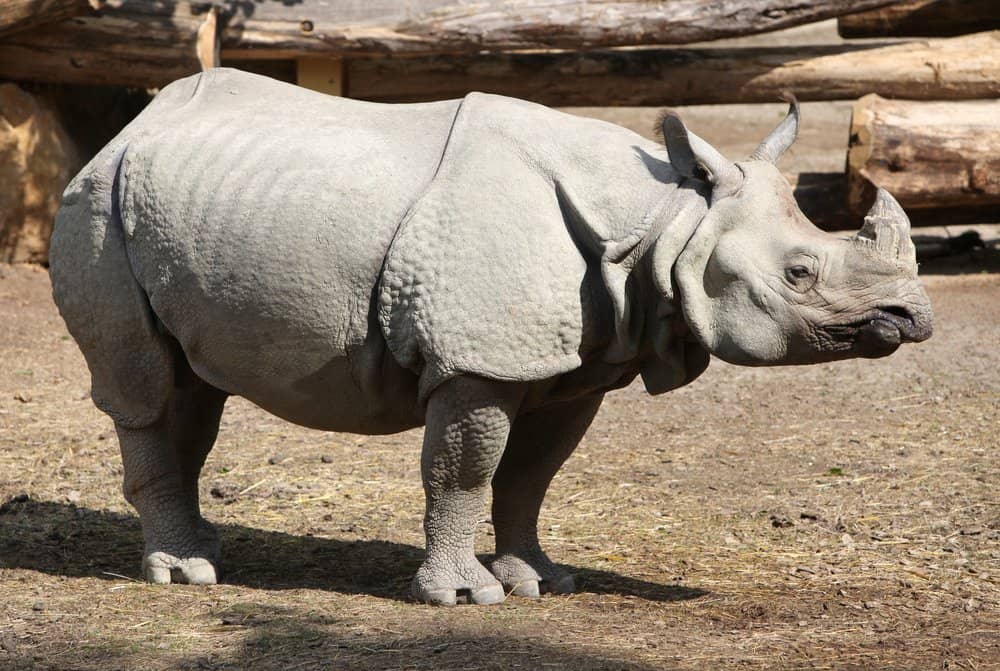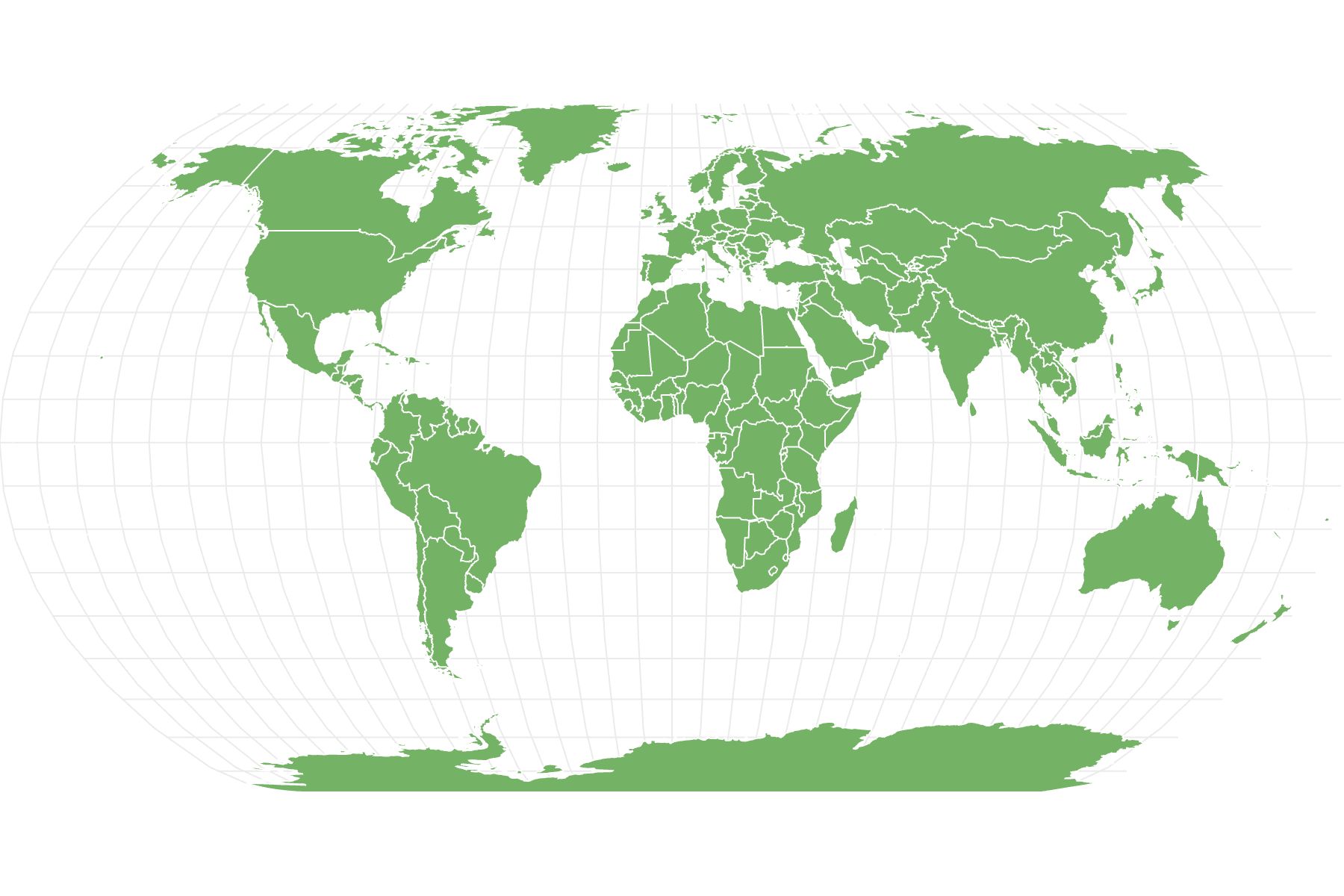Javan Rhinoceros
.jumbotron {
background-image: url(“https://a-z-animals.com/media/animals/images/original/javan_rhinoceros-400×300.jpg”);
}
}
@media only screen and (min-width: 641px) and (max-width: 920px) {
.jumbotron {
background-image: url(“https://a-z-animals.com/media/animals/images/original/javan_rhinoceros-470×370.jpg”);
}
}
@media only screen and (min-width: 921px) {
.jumbotron {
background-image: url(“https://a-z-animals.com/media/animals/images/original/javan_rhinoceros.jpg”);
}
}
Javan Rhinoceros
Rhinoceros Sondaicus
Only has a 25cm long horn!
Javan Rhinoceros Scientific Classification
- Kingdom
- Animalia
- Phylum
- Chordata
- Class
- Mammalia
- Order
- Perissodactyla
- Family
- Rhinocerotidae
- Genus
- Rhinoceros
- Scientific Name
- Rhinoceros Sondaicus
Read our Complete Guide to Classification of Animals.
Javan Rhinoceros Conservation Status
Javan Rhinoceros Facts
- Main Prey
- Grass, Fruit, Berries, Leaves
- Habitat
- Tropical bushland, grassland and rainforest
- Predators
- Human, Wild cats
- Diet
- Herbivore
- Average Litter Size
- 1
This post may contain affiliate links to our partners like Chewy, Amazon, and others. Purchasing through these helps us further the A-Z Animals mission to educate about the world’s species..

Spiders that fly! Fish that walk! And 1000+ more incredible animals. Discover them all for FREE
.photo-gallery {
–margin: 0px auto 0px;
–padding: 0px 0px 0px 0px;
}
.gallery-link {
background-image: url(“https://a-z-animals.com/media/JavanRhino-1024×1024.png”);
background-repeat: no-repeat;
background-size: cover;
background-position: center;
height: 500px;
justify-content: center;
text-align: center;
align-items: center;
display: flex;
border: 2px solid #000;
}
.gallery-link img {
height: 50%;
}
@media only screen and (max-width: 768px) {
.gallery-link {
height: 300px !important;
}
}
View all of the Javan Rhinoceros images!
Limited to just a single national park, the Javan rhino today numbers just 72 individuals in the wild
The Javan rhinoceros (also known as the lesser one-horned rhinoceros and the Sunda rhinoceros) is a species of rhinoceros native to of Southeast Asia. The Javan rhinoceros is thought to be most closely related to the Indian rhinoceros, both of which only have one horn.
As of 2019, its estimated just 72 Javan rhinos survive in a single national park named Ujung Kulon on the Indonesian island of Java’s western-most tip. However, with no poaching of the species reported in more than 25 years at Ujung Kulon, there’s hope for the species’ survival.
Incredible Javan Rhinoceros Facts!
- The Javan rhinoceros once roamed from India, to Vietnam, and south to the islands of Indonesia. The last mainland Javan rhino was poached in 2010, leaving the subspecies of mainland Javan rhinos extinct.
- Female Javan rhinos often lack a horn or have a small “nub.”
- Today, the Javan rhino is found in only a single national park that sits 37 miles (60 km) from an active volcano that’s erupted as recently as December, 2019.
Javan Rhinoceros Scientific Name
The scientific name for the Javan rhinoceros is Rhinoceros sondaicus. Along with the Indian rhinoceros, the Javan rhino is in the genus Rhinoceros, which is Greek for ‘nose’ and ‘horn’ and comprises the two species of one-horned rhinos. Sondaicus refers to ‘Sunda,’ a name for the Southeastern Asian where Javan rhinos historically lived.
Javan Rhinoceros Appearance
The Javan rhino is smaller than the Indian rhinoceros, weighing 900 to 2,300 kg (2,000 to 5,100 lbs). Its length stretches 3.1 to 3.2 m (10 to 10.5 ft).
The Javan rhino closely resembles Indian rhinos. Both species have a single horn, though female Javan rhinos often lack a horn or have a small “nub” on their nose. In addition, the Javan rhino’s skin folds aren’t as pronounced as the Indian rhino. This gives the species less of a look of having “body armor.”
Due to the extreme rarity of Javan rhinos, they’ve been studied the least of all rhino species. Today, few pictures are taken of Javan rhinos, with most study coming from camera traps in the dense forests it inhabits in Ujung Kulon National Park.

Reinhold Leitner/Shutterstock.com
Javan Rhinoceros Habitat
The Javan Rhino primarily inhabits dense lowland rain forests, tall grass and reed beds that are plentiful with rivers, large floodplains, or wet areas with many mud wallows. The range of Javan rhinoceros once stretched from Bengal, through Southeast Asia and down to Sumatra but today, the Javan rhinoceros is only found on the island of Java.
Where the Javan rhinoceros is found today: Ujung Kulon
Today, the Javan rhino is known to survive in just a single habitat, the Ujung Kulon National Park on the western edge of the island of Java. The national park measures only about 498 square kilometers (192 sq. mi), which means all Javan rhinos live in an area about the same size as the city of Tulsa, Oklahoma.
While Javan rhinos were either hunted into extinction or lost their habitat across Southeast Asia, they’ve survived in Ujung Kulon after unique circumstances. In 1883 a massive volcano named Krakatoa erupted off the coast of Indonesia and decimated surrounding areas. After the event, humans fled the area, but rhinos and many other critically endangered species began repopulating there.
Today, Ujung Kulon provides a protected environment that has allowed Javan rhino populations to stabilize, but it can only support a limited amount of rhinos within its borders.
Javan Rhino Population — How Many Javan Rhinos Are Left?
The population of Javan rhinos was estimated at 72 individuals by the International Rhino Foundation in 2019.
While this population makes the Javan rhino one of the most critically endangered mammals on Earth, it has been stable for more than 30 years and their population has increased from an estimated 50 individuals across the past decade. Learn more about the most endangered species in the world here.
Extinct Javan rhino subspecies
Historically there were three subspecies of Javan rhinoceros. In addition to the subspecies that survives today, there was the Indian Javan rhinoceros and the Vietnamese Javan rhinoceros.
Today, both the Indian Javan rhinoceros and the Vietnamese Javan rhinoceros have been declared extinct. A small species of Javan rhinos were found in Vietnam’s Cat Tien park, but the last surviving member of the subspecies was found poached in 2010.
Javan Rhino Diet
The Javan rhino is a herbivore that browses across shrubs, bushes, and saplings. Javan rhinos browse the densely vegetated sub-tropical forest for leaves, flowers, buds, fruits, berries and roots which they dig up from the ground using their horns.
Due to Javan rhinos being restricted to a small habitat, it’s hard to know how varied their diet was across their historical range. With Javan rhino populations having ranged all the way to the dense grasslands of India, it’s likely the species once grazed as well.
Javan Rhino Predators
The Javan rhino faces few predators in the wild. Javan tigers existed in Ujung Kulon until the 1960s, but have been declared extinct. A small population of Javan leopards survive in Ujung Kulon and could prey on rhino calves and weaker individuals.
With no human poaching reported in the rhino’s surviving habitat in the past 25 years, its greatest threat today is a lack of genetic diversity that threatens breeding numbers.
Javan Rhino Reproduction and Life Cycles
With an extremely small population and long gestation periods, the birth of any Javan rhino is closely monitored. In December 2019, four new calves were spotted, increasing the population to an estimated 72 rhinos.
Like all rhino species, the Javan rhino has a long gestation period which makes repopulating challenging. Since no Javan rhinos are held in captivity, their gestation period isn’t precisely known. However, its believed to be roughly 15 to 16 months.
Javan Rhino Facts
- Living in the shadow of a volcano
- The remaining Javan rhino population survived after repopulating an area devasted by the eruption of the volcano Krakatau in 1883. However, the species today faces the threat of natural disasters as a nearby volcano named Anak Krakatau continues erupting.
- A close scare in 2018
- Anak Krakatau lays just 37 miles (60 km) from the coast of the Javan rhino’s single remaining habitat. In December 2018, the volcano erupted and unleashed a tsunami that killed two park rangers at Ujung Kulon. It’s believed no Javan rhinos were harmed, but the event demonstrates the risks that remain with all rhinos living in a habitat that’s susceptible to natural disasters.
- 145 million people and 72 Javan rhinos
- One of the challenges to repopulating the Javan rhino is the loss of suitable habitats across Java. The island is only about the size of Arkansas (population: 3 million), but is home to about 145 million people. This growth in population has left few suitable habitats for large Javan rhino populations.
View all 25 animals that start with J
Javan Rhinoceros FAQs (Frequently Asked Questions)
Why is the Javan rhino so endangered?
The Javan rhinoceros saw its population precipitously declines in the early 19thand 20thcentury from poaching that cleared the species out form much of its historical range.
However, today the greater threat to Javan rhino’s is habitat loss and the difficulty of rebounding from such low population levels. With an estimated 72 Javan rhinos left in just a single national park, the species is reaching the limits of its population growth at Ujung Kulon National Park. However, with few remaining habitats left in Java, conservation groups and the government of Indonesia have struggled to find a second viable environment for the Javan rhino. As of late 2019, the plan is to continue expanding Ujung Kulon to give the Javan rhinos more habitat to expand.
Are Javan Rhinoceroses herbivores, carnivores, or omnivores?
Javan Rhinoceroses are Herbivores, meaning they eat plants.
What Kingdom do Javan Rhinoceroses belong to?
Javan Rhinoceroses belong to the Kingdom Animalia.
What phylum do Javan Rhinoceroses belong to?
Javan Rhinoceroses belong to the phylum Chordata.
What class do Javan Rhinoceroses belong to?
Javan Rhinoceroses belong to the class Mammalia.
What family do Javan Rhinoceroses belong to?
Javan Rhinoceroses belong to the family Rhinocerotidae.
What order do Javan Rhinoceroses belong to?
Javan Rhinoceroses belong to the order Perissodactyla.
What genus do Javan Rhinoceroses belong to?
Javan Rhinoceroses belong to the genus Rhinoceros.
What type of covering do Javan Rhinoceroses have?
Javan Rhinoceroses are covered in Leathery skin.
In what type of habitat do Javan Rhinoceroses live?
Javan Rhinoceroses live in tropical bushland, grasslands, and rainforests.
What do Javan Rhinoceroses eat?
Javan Rhinoceroses eat grass, fruit, berries, and leaves.
What are some predators of Javan Rhinoceroses?
Predators of Javan Rhinoceroses include humans and wild cats.
How many babies do Javan Rhinoceroses have?
The average number of babies a Javan Rhinoceros has is 1.
What is an interesting fact about Javan Rhinoceroses?
Javan Rhinoceroses only have a 25 centimeter-long horn!
What is the scientific name for the Javan Rhinoceros?
The scientific name for the Javan Rhinoceros is Rhinoceros Sondaicus.
What is the lifespan of a Javan Rhinoceros?
Javan Rhinoceroses can live for 30 to 45 years.
How fast is a Javan Rhinoceros?
A Javan Rhinoceros can travel at speeds of up to 30 miles per hour.
Sources
- David Burnie, Dorling Kindersley (2011) Animal, The Definitive Visual Guide To The World’s Wildlife
- Tom Jackson, Lorenz Books (2007) The World Encyclopedia Of Animals
- David Burnie, Kingfisher (2011) The Kingfisher Animal Encyclopedia
- Richard Mackay, University of California Press (2009) The Atlas Of Endangered Species
- David Burnie, Dorling Kindersley (2008) Illustrated Encyclopedia Of Animals
- Dorling Kindersley (2006) Dorling Kindersley Encyclopedia Of Animals
- David W. Macdonald, Oxford University Press (2010) The Encyclopedia Of Mammals
















